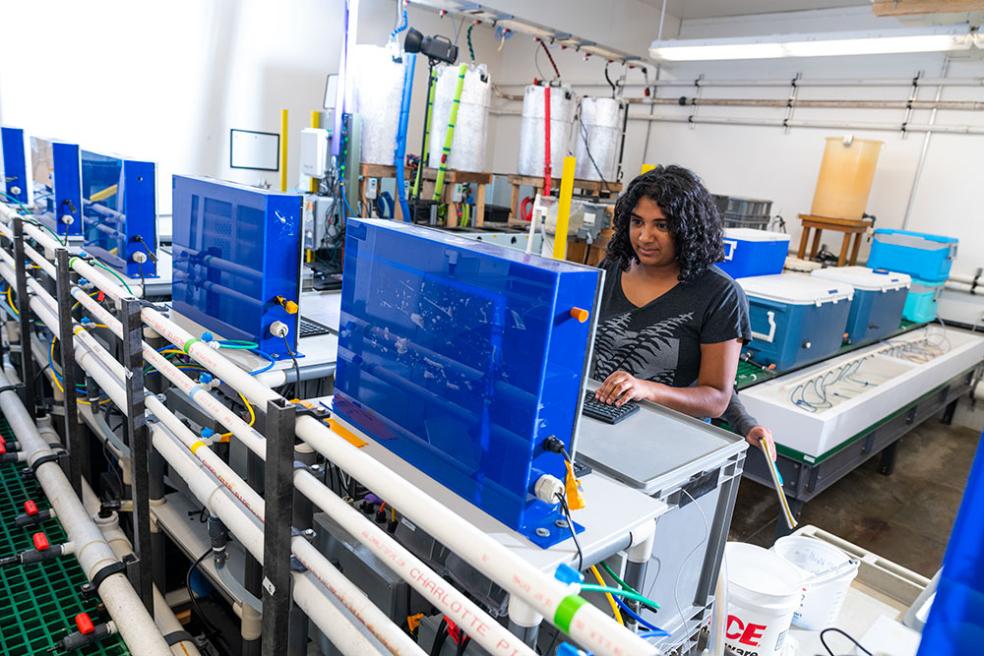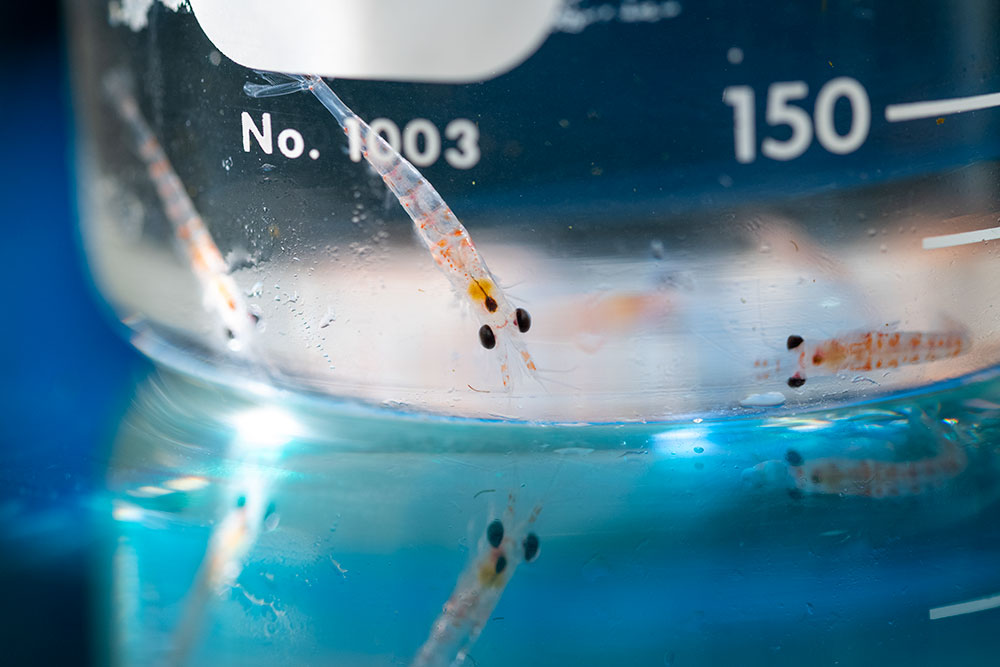
Research associate Roxanne Robertson and Fisheries Biology graduate student Juhi LaFuente are focusing on north Pacific krill (Euphausia pacifica), a foundation of the food chain in waters off California.
These small crustaceans are an abundant food source for many different organisms, says LaFuente. “From big to small, whales to juvenile fish.”
That makes these small creatures vastly important to the entire marine ecosystem, including many ecologically, economically, and culturally important animals.
Robertson is interested in krill because of the scale of their importance and their susceptibility to currents and other ocean trends. Since 2012, she’s been working at Cal Poly Humboldt’s Telonicher Marine Lab for the Trinidad Head Line ocean observing program—a long-running collaboration between NOAA and Cal Poly Humboldt. The Trinidad Head Line is a series of sampling stations that extends 25 miles due west of Trinidad Head. Since 2007, the program has conducted monthly cruises on board Cal Poly Humboldt’s R/V Coral Sea to collect zooplankton and water samples.

Around 2014, Robertson thought she noticed that adult krill were becoming smaller, so she and Fisheries Biology professor Eric Bjorkstedt developed a study which confirmed her theory; during warmer conditions, for example the marine heatwave in 2014—2016, adult krill were smaller. When krill are smaller, they provide less energy to the animals that prey on them, which could hinder the health of the entire marine ecosystem.
For her graduate work at Humboldt, she developed a unique model to predict the size and growth of krill under different ocean conditions. Krill data from Trinidad Head Line observations were used to inform model development and validate the model. The model can predict krill characteristics in response to changes in temperature and food availability, and Robertson and her colleagues have plans to advance the model by incorporating responses to pH and oxygen level, ocean properties that will be affected by climate change.
“It's really cool how observations from the field led to questions that we were able to answer because we had this long term data set,” Robertson says. “These kinds of data sets are not super common.”
To understand how krill might respond to changing ocean conditions, LaFuente and her colleagues will need to understand the response of krill to a host of ocean properties, including temperature, but also pH and oxygen, and that’s where LaFuente’s graduate research comes in. After studying Marine Ecology at Western Washington University, LaFuente gained subsequent oceanographic research experience at the Washington State Department of Ecology, and the University of Washington. Aligned with her research interests, she leapt at the opportunity to further her studies at Humboldt.
For the last two years, she’s been establishing infrastructure at the Telonicher Marine Lab. Previously housed at the Northwest Fisheries Science Center’s Mukilteo Field Station, the system consists of 12 independent units each equipped with hardware to manipulate water chemistry and house live krill.
This setup allows LaFuente to recreate real-world and experimental water conditions. “I’m able to recreate the path krill take every day—to manipulate conditions on a daily cycle to mimic what they experience in the real world.”
Currently, LaFuente is researching the effects of temperature changes on krill. She will use these data to advance Robertson’s model, particularly the model’s ability to predict krill dynamics in response to elevated temperatures. The improved model will allow LaFuente and her colleagues to investigate how future ocean conditions might affect krill populations in 2050 and 2100.
In future experiments, LaFuente will layer in adjustments to pH and dissolved oxygen to get a more nuanced picture of how krill will adapt to a changing ocean environment.
“I’m able to use this experimental setup to better understand how krill will respond to future ocean conditions,” she says. “Since krill occupy a crucial role in the ocean-ecosystem, this information will help us understand how the entire ecosystem might be affected by future ocean conditions.”